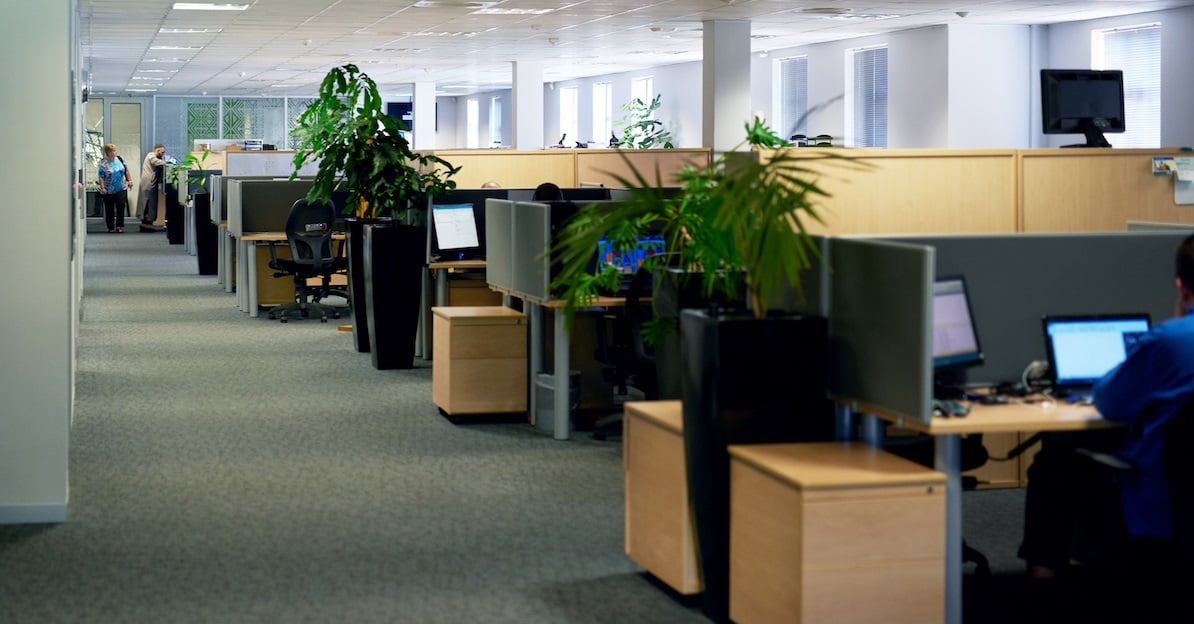When most people think about modern business security, they tend to focus on digital security, like firewalls, login credentials, and antivirus software. Digital security is critically important, and for organizations of any size, it’s an area that deserves significant attention. However, physical security also has an important role to play in safeguarding valuable data and infrastructure.

What Is Physical Security For Business?
Physical security protects your technology, data, and staff from physical actions and events. Many potentially damaging events are covered by insurance, but prevention efforts can save an enormous amount of time and money.
Physical Security Hardware
Digital video surveillance is perhaps the most well-known type of physical security for businesses. Having cameras rolling helps businesses identify responsible parties in the event of a physical security breach. Thanks to the cloud, digital video surveillance now has improved capabilities. For example, Marco’s cloud-based surveillance is incredibly easy to use, and offers 24/7 visual access into any facility, from anywhere.
Additional forms of physical security hardware include requiring employees to enter a code or swipe their badge to enter different areas. This technology can also restrict access to various points of entry.
Educating And Training Employees
While it’s tempting to rely on hardware and technology to safeguard vital data and infrastructure, workplace security actually relies far more heavily on educating and training employees. That’s because 90% of data breaches are caused by human error, including everything from careless mistakes made when configuring a system to accidentally revealing sensitive information to hackers.
There’s good news: with the right training provider, employees can become an excellent line of defense. For that reason, Marco has recently partnered with KnowBe4 to provide end-user security awareness. The platform has demonstrated a great deal of success, for example, in reducing the percentage of employees who are susceptible to phishing emails.
Workstation Security
Every employee’s workstation is a potential entry point for security breaches. Documents left out on the desk and tabs left open on the computer can be an easy score for someone infiltrating your office. Thankfully, the solution to this problem is almost just as easy. Workstations can be secured by implementing and enforcing a clean desk policy.
A clean desk policy advises employees on how to put away or otherwise secure private documents, binders, and tech devices whenever they leave their station. Additional measures can include locking down the computer screen, hiding any keys or codes, and destroying any sticky notes with password information on them.
Printer Security
While networked printers can be vulnerable to hackers, a good printer security policy should also include elements of physical security as well. For example, if the office printer isn’t nearby, it’s shockingly common for employees to simply forget about a print job. In fact, up to 30% of documents are never retrieved from an office printer. Forgotten print jobs are a significant source of paper waste, but if they contain sensitive employee or customer data, they’re also a significant security risk. Marco’s printer experts can recommend a variety of print security solutions to further safeguard sensitive data.
Building Security
Another area where employees can help to protect your business is by keeping an eye out for individuals who aren’t employees in employee-only spaces. Something as simple as saying, “Hi, have we met?” or “Can I help you?” can be a great, non-confrontational way to promote physical security. This, and any other guidelines for protecting your business, belong in your company’s IT security policy.
What Is An IT Security Policy?
The final step I recommend for promoting physical security at your business is ensuring there is an internal security policy in place. An IT security policy is an internal policy a business puts together that details a process for how employees can help ensure safety.
To ensure your internal security policy is up to industry best practices, we recommend comparing it against our Security Checklist. This free resource outlines over 20 business security best practices that any company stands to benefit from.